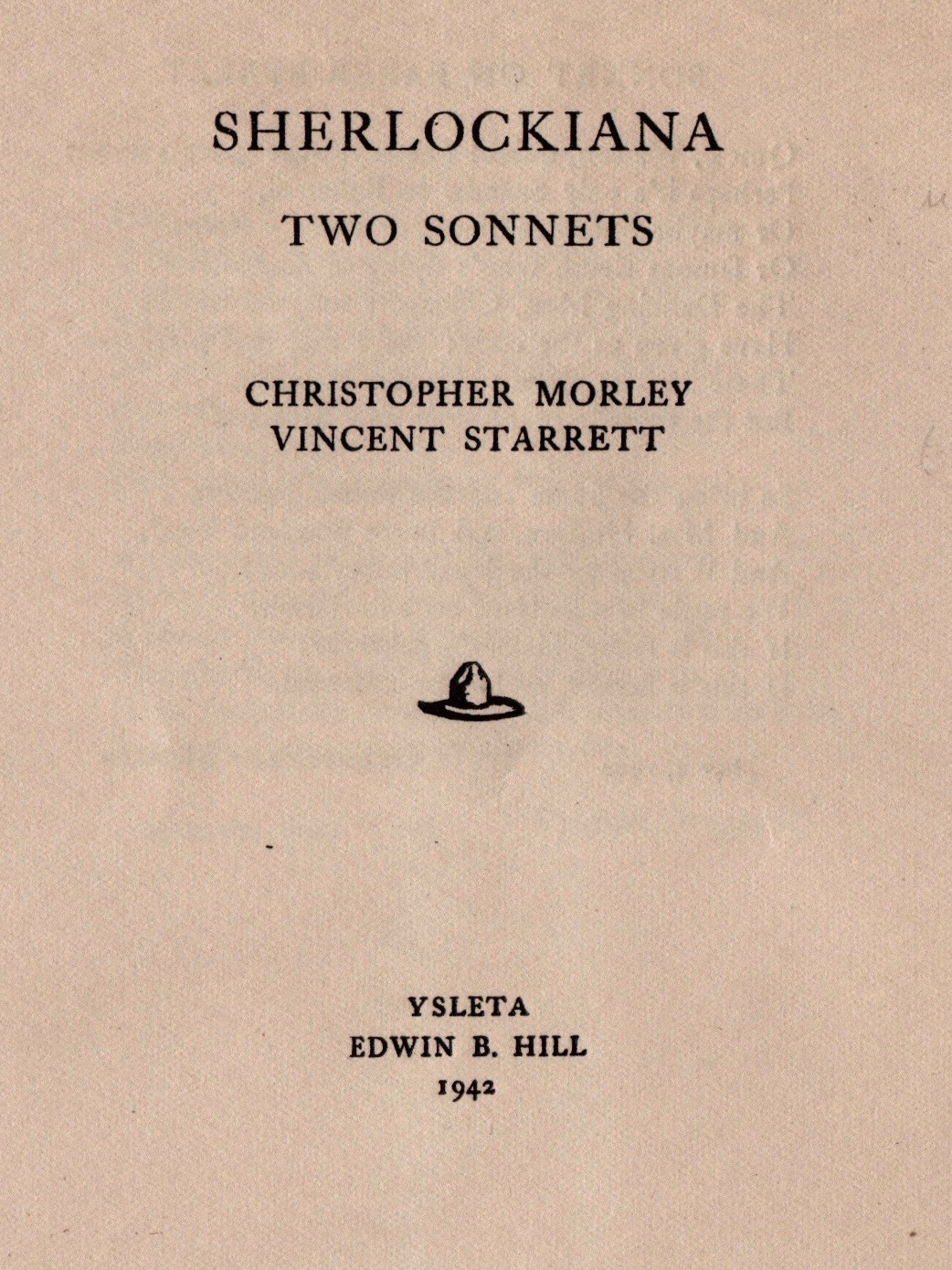221B's First Public Appearance
Wherein I find I don't know what I thought I knew.
A portrait of Charles Collins from Ben Hecht's book, A Child of the Century.
Meet Charles Collins.
He was a mainstay of Chicago's newspaper world from the 1920s to the early 60s and a good friend of Vincent Starrett. He was also one of the four Founding Fathers of the Hounds of the Baskerville (sic).
Charles William Collins was born in Madison, Indiana on Nov. 19, 1880. His family moved to Chicago when he was four. He graduated from the University of Chicago and worked for several newspapers before landing a gig at the Chicago Tribune as a theater critic and later a columnist.
For nearly two decades, Collins oversaw the popular column "A Line O' Type or Two." Funny and folksy, the column was one of the most popular features of the newspaper before, during and after his tenure as editor. While many of the briefs that made up the column were sent in by readers, it was Collins' sensibility that set the tone for the daily column.
Less well known was a second column he edited, "Bookman's Holiday." It's this column that we're going to talk about today because it was there that the most beloved poem in the Sherlockian world had its public premiere.



But first, a little background on the publication history of the poem.
Until a few weeks ago, I thought the history of "221B" went like this:
Starrett's sonnet was written on March 11, 1942 and dedicated to Edgar W. Smith, leader of the Baker Street Irregulars. He sent the sonnet to friends, including Smith and Christopher Morley.
Private publication as a Christmas card with Morley's poem "Sonnet on Baker Street" came next. The Christmas card was printed in November 1942 by Starrett's friend, Edwin B. Hill, in a limited edition of 60 copies. The card was sent to friends and Collins, as we'll see, was one of the recipients.
The first public publication of the sonnet was in 1943, in a book of Starrett's poetry called Autolycus In Limbo. It's on page 32 of the book. (We'll have more to say about Autolycus in Limbo in a future posting.)
From there, it went on to other publications like 221B: Studies in Sherlock Holmes and a permanent spot on many scion society programs.
That was the order I've been certain of and reporting on for decades.
Until now.
While researching the history of the Hounds of the Baskerville (sic) for their 75th anniversary on Oct. 6, I was surprised to see that Collins had talked about the poem in his column, "Bookman's Holiday." Here's how Collins told his readers about "221B."
I have no idea how those coffee stains got on this book's dust jacket.
On Christmas Eve, Collins thanked his contributors for their Christmas cards and then cites one card in particular:
"Vincent Starrett's is unique in that it does not mention Christmas at all. It is a printed leaflet forming a first edition of two sonnets on Sherlock Holmes, by sender and Christopher Morley. Starrett's verses close with this reference to Sherlock and Dr. Watson in their rooms at 221B Baker Street London:
Here, though the world explode, these two survive,And it is always eighteen ninety-five."
This commentary by Collins has been previously documented and was reported by Hounds historian John Nieminski in his book, Sherlock in the Trib published in 2000 by Magico Magazine of New York. (Anyone with an interest in the early years of Starrett's Irregular society in Chicago should get the book. Nieminski has culled great comments from Collins, showing that his Tribune column acted for the Hounds in the same way Morley's Bowling Green column in the Saturday Review did for the BSI. And there is a great pair of prefaces by the late Ely Liebow.)
The first public printing of Vincent Starrett's sonnet, "221B" from the Chicago Tribune for Jan. 3, 1943. Charles Collins edited "Bookman's Holiday" for the Tribune.
What Nieminski seems to have missed was the sequel in Collins' column for January 3, 1943. Here it is:
“Mr. Starrett’s sonnet to Sherlock Holmes and Dr. Watson deserves a wider circulation than that of a personal Christmas card. We are tempted to recite it:”
And as you can see, Collins does just that.
This was the first public printing of the poem, but it would not be the last for Chicago's Hounds.
Whether he knew it or not, Collins started a tradition that Hounds have been keeping up ever since. For each year's dinner, Hounds have produced a beautiful version of Starrett's poem. I don't know how long the tradition has being going on, but I can tell you that no other Sherlock Holmes group in the world has revered this poem so deeply and for so long, as the Hounds.
They are the true keepers of the "221B" flame.
And Charles Collins started it all.
NB: Claiming that you've found something that others have missed in the Starrett world is a risky claim to make. There have been so many others who have tread this path before me that I can't help but wonder if I'm not the first. So if you know of a publication where this is noted, please let me know.
One of the beautiful reproductions of "221B" produced by the Hounds of the Baskerville over the years. This one was distributed at the 2003 Hounds dinner. I've used it periodically as the cover photo for the Studies in Starrett FaceBook page.
